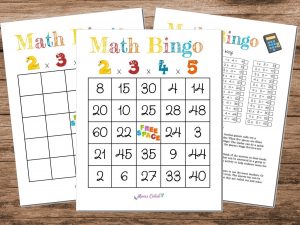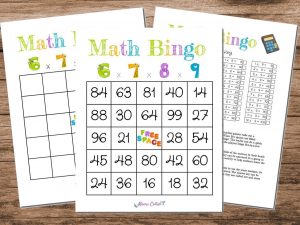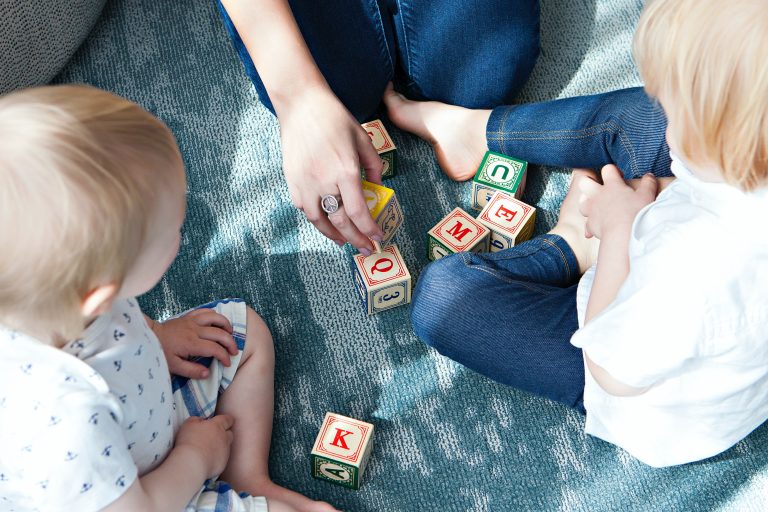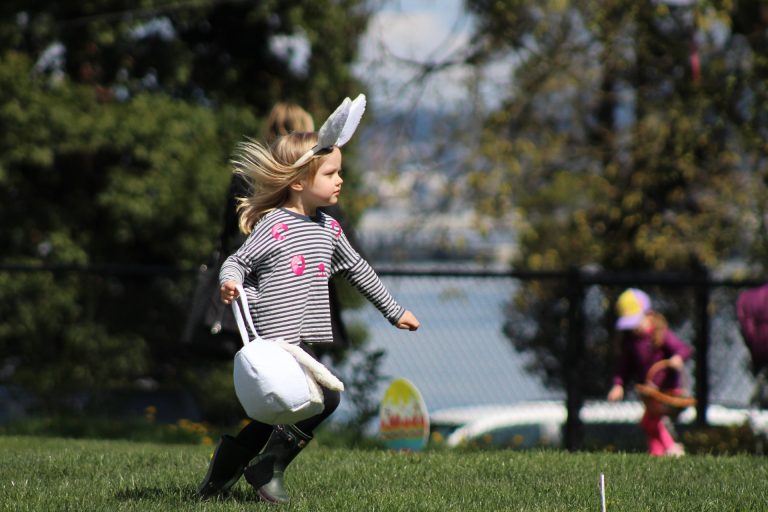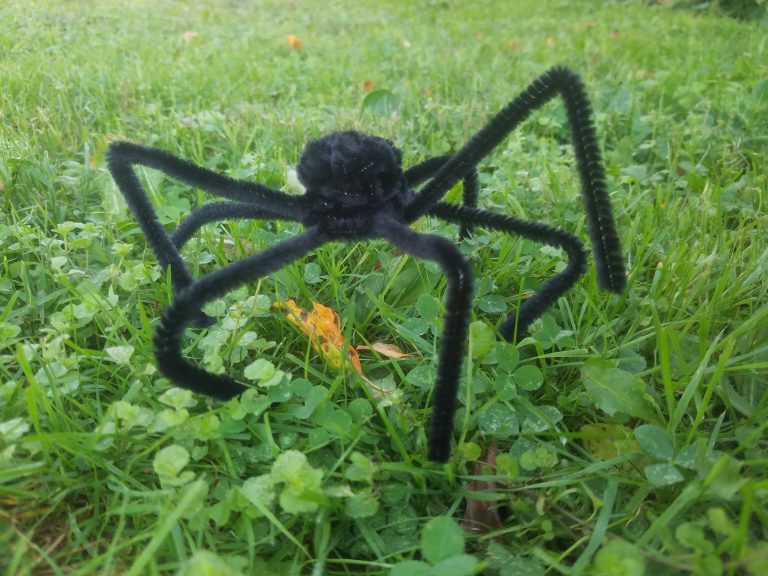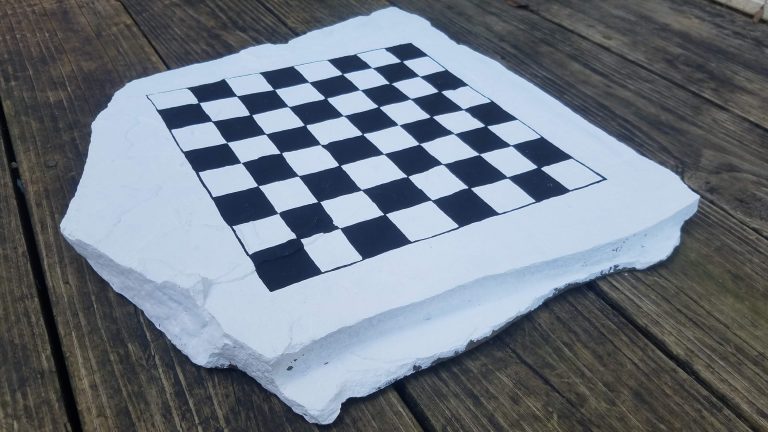How to Make a Math Bingo Game to Help Kids Learn Arithmetic
This post may contain affiliate links. Please see my full disclosure policy for details.
Math doesn’t come easily to every child. Adding apples to oranges might make sense to some, but to others, inserting random objects may just throw a wrench in the game.
That’s why one of the best ways to teach children math is to encourage proper practice. Multiplication bingo is the perfect way to help your child (or class of children) have fun practicing arithmetic.
If your children need help learning math, make them a fun addition and subtraction or multiplication bingo printable. Playing a game gives kids practice in an enjoyable way. This game can be made for every times table, and it could even work for addition, subtraction, and division practice as well.
Start helping your children learn math in a way that relates to them on their level. Today, you’ll learn how to make a math bingo game that you can use again and again until math is second nature to your kids.
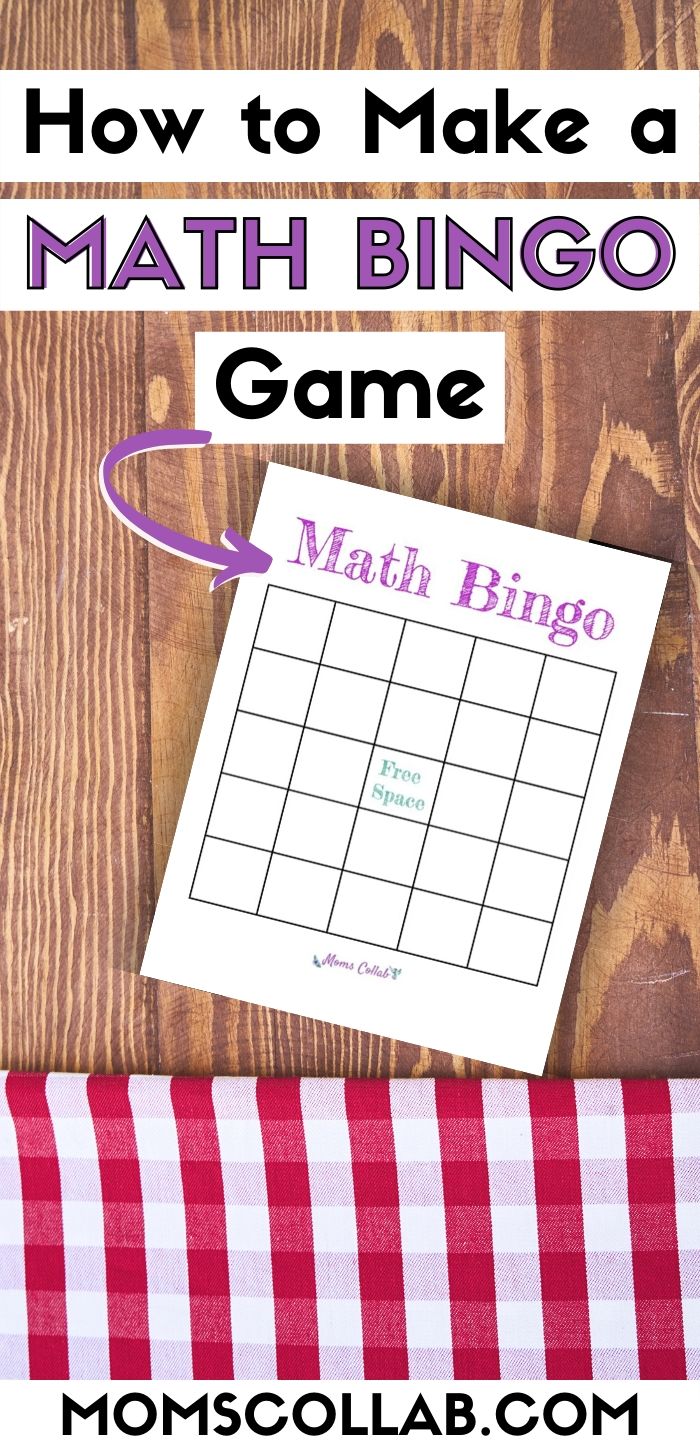
How Is Math Used in Bingo?
Before we get started on how to make arithmetic bingo, let’s talk about how you can incorporate math practice into a game like bingo.
For a visual on how it works, check out our games on Etsy. And if you prefer to skip the hassle of creating your own game, you can use one of our premade, printable kits!
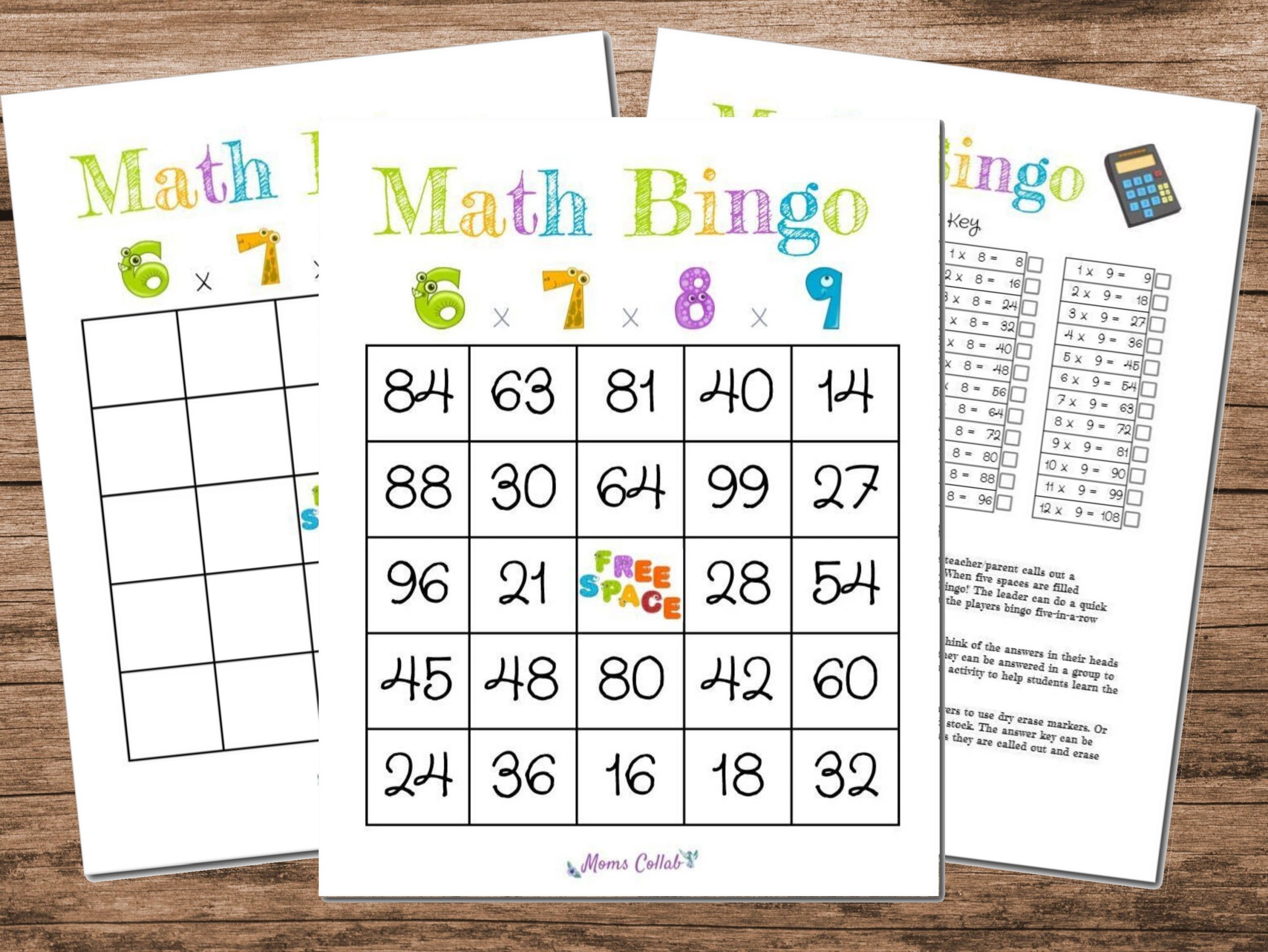
This is how multiplication bingo works: each child receives a unique bingo sheet. The teacher uses the answer key to randomly ask multiplication problems and checks them off on the answer sheet as she goes. Each child marks the answer to the problem on his or her own bingo sheet. The children can either calculate the answer on their own or share the answers as a group (depending on the type of practice you wish them to have).
When a child marks five numbers in a row (horizontally, vertically, or diagonally) he or she should shout “bingo!” Make sure to check the answers against the answer sheet to ensure the child answered correctly.
We have a game that covers 6, 7, 8, and 9 multiplication tables which are typically the hardest for kids to learn, and another easier game that covers 2, 3, 4, and 5 multiplication tables.
5 Steps to Make a Math Bingo Board Game
Follow these steps to create your own math bingo board games for kids in every age group!
1. Write Out Four Times Tables
Depending on your child’s age and comprehension of math, decide which times tables to use for your math bingo game. To fill the game board and allow for some extra answers that won’t show on every game board, we used four times tables for one game (6s, 7s, 8s, and 9) and four more for another game (2s, 3s, 4s, and 5s).
Instead of creating multiplication bingo problem cards, you can write or type out your multiplication tables on a single sheet of paper. Then, instead of drawing cards like drawing balls from a bingo machine mixer, the leader can just choose a problem from the answer key in random order.
We wrote multiplication tables out first and then decided to type it out to make it look more professional for a class setting.
Typed Example
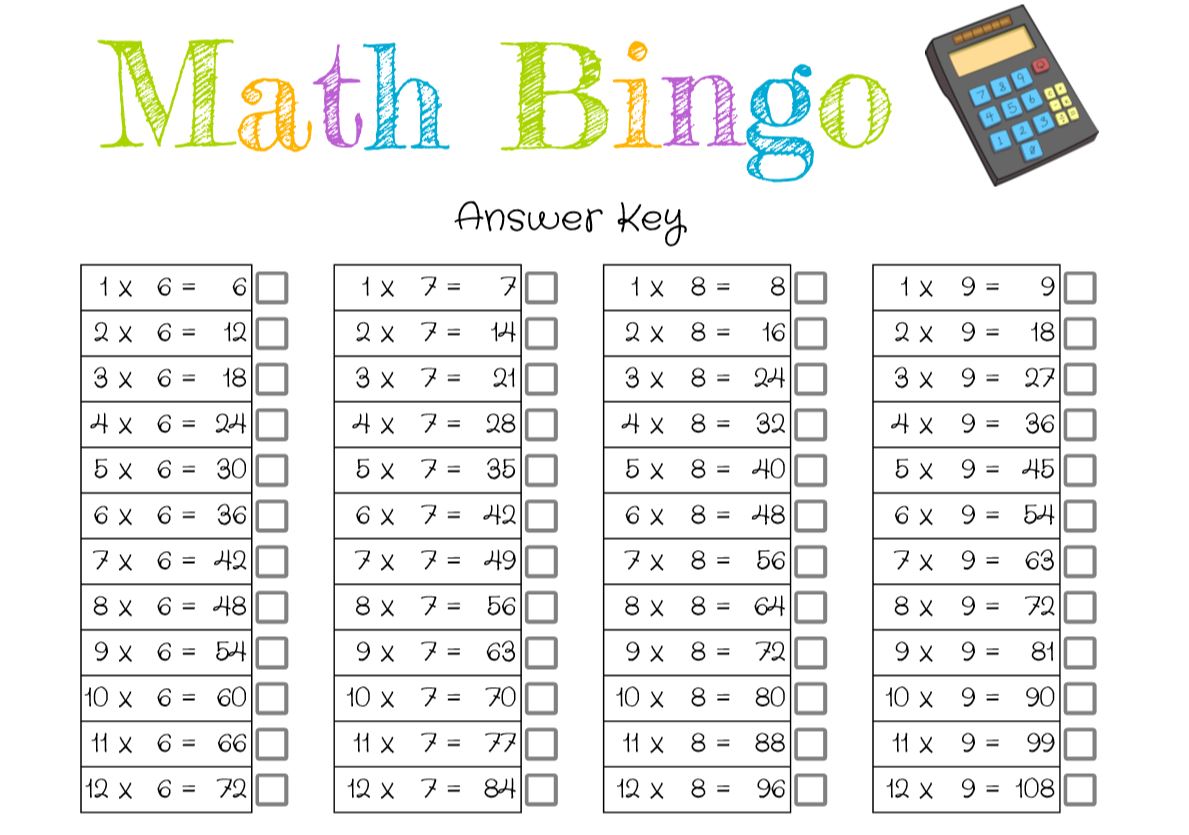
Written Example

2. Create a Blank Math Bingo Template
You’ll need to either hand draw or print a blank math bingo template. You’ll want to create this one time and then make copies to later add your numbers to.
Our original simple graph was six by six squares. It worked well, but makes the game longer and doesn’t allow for a free space in the middle.
Our second version is five by five squares and has a middle space to add a free space.
You can download and print our FREE math bingo template by clicking here.
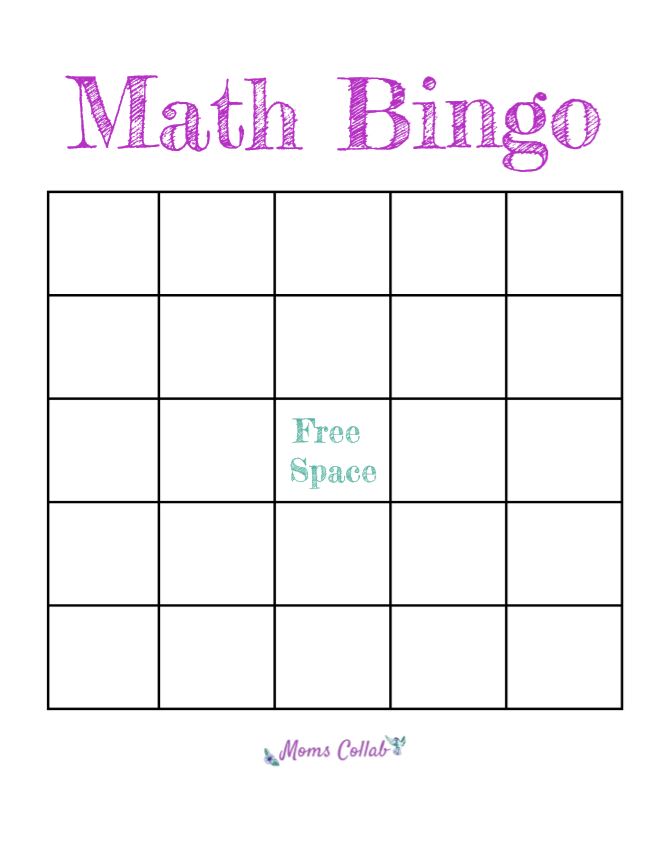
3. Fill In Each Bingo Sheet with Numbers
To make the game fun, you’ll need to create a unique bingo sheet for each child. If multiple players have the same sheet, they will get a “bingo” at the same time, every time. This is relatively simple if you have one to three children, but the more players you have, the more time consuming it gets to create enough bingo sheets.
Our math bingo kits have 10 unique bingo boards and a blank sheet to create more if needed. Check them out here on Etsy.
You can also use a bingo board generator tool to generate up to 50 unique boards at a time. And if your game turns out to be a hit, you can list it on your own Etsy store and sell it over and over again for some extra cash!
All of the numbers on the bingo sheets need to be filled in from the answer sheet you created in step one in random order. The sheets do not, however, need to include every number from the answer sheet.
Printed Examples (Five by Five)
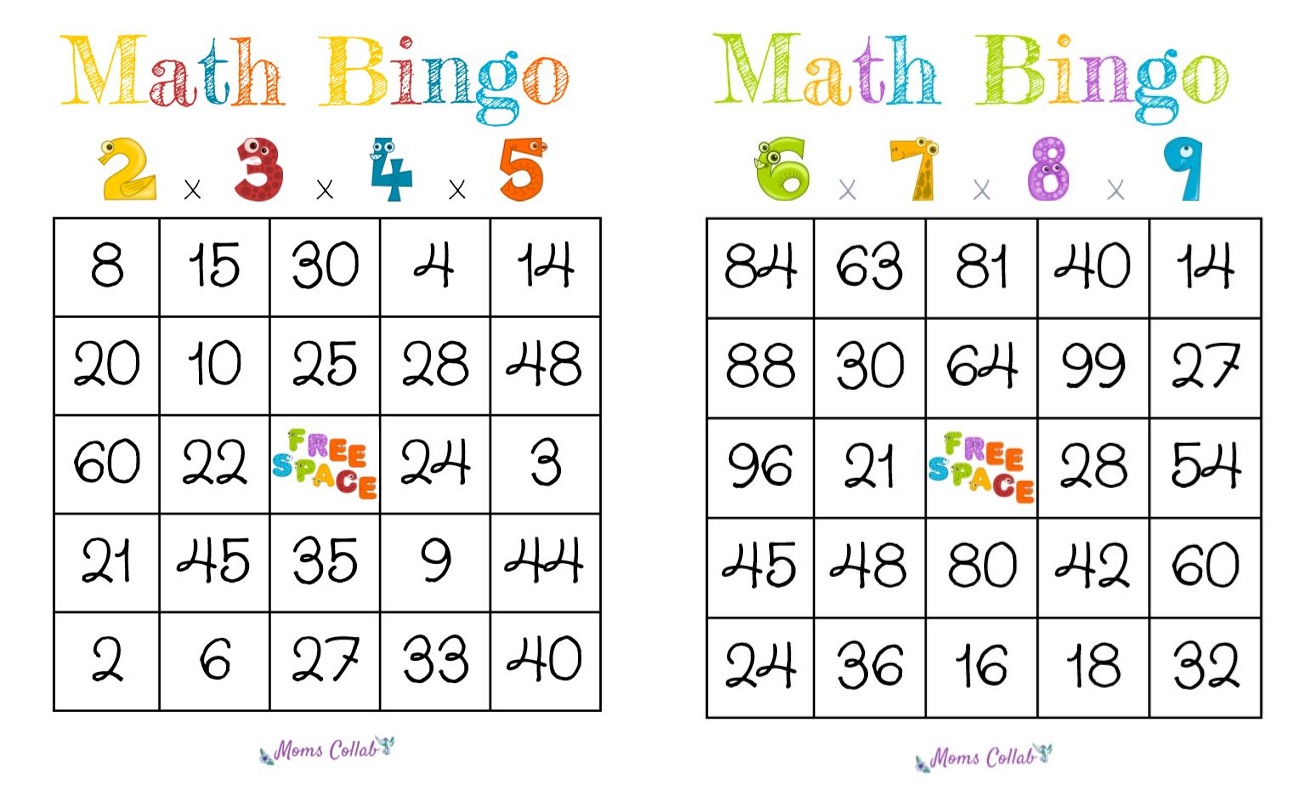
Handwritten Example (Six by Six)
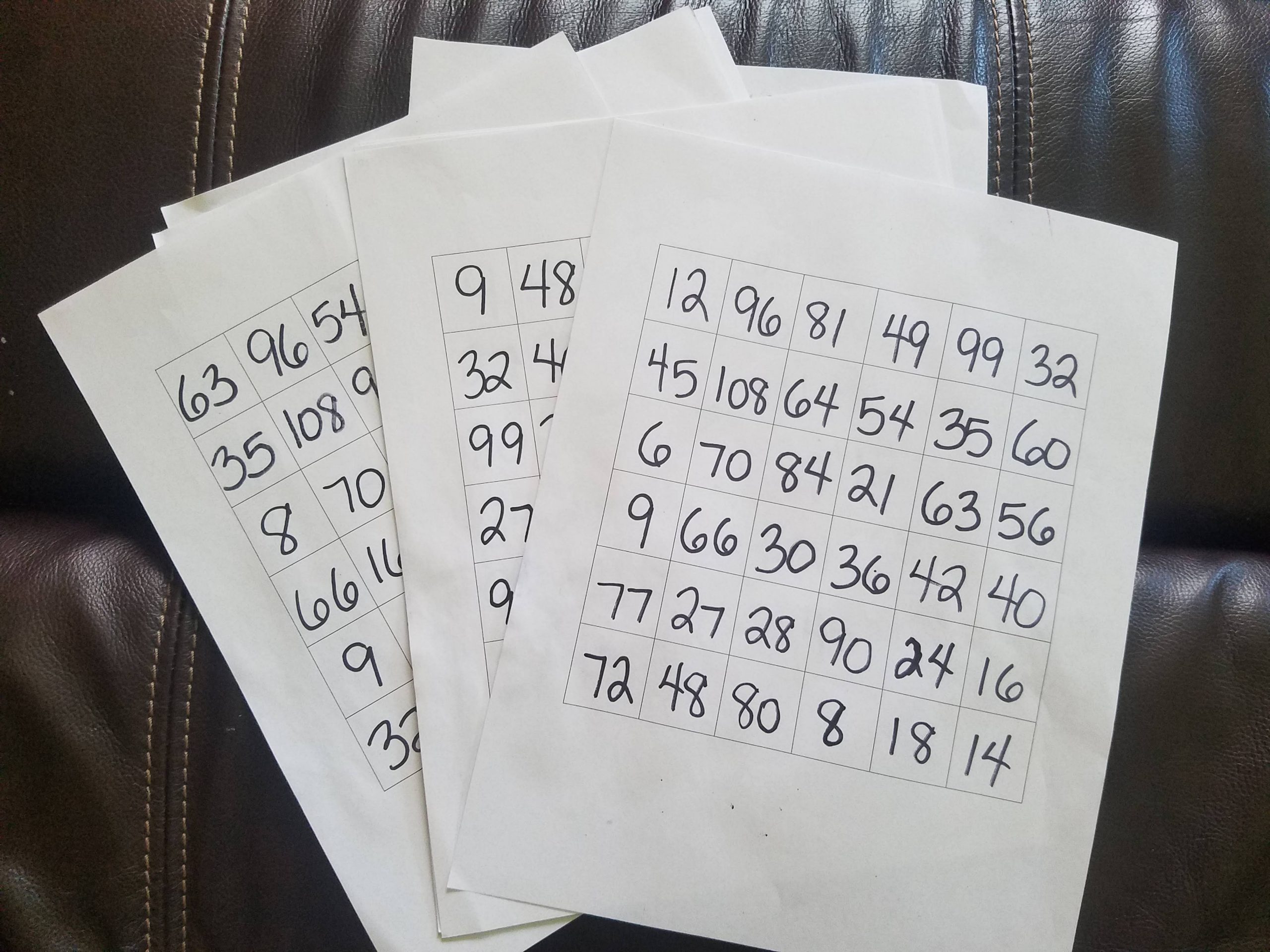
4. Print Copies of Your Game
After you’ve created your math multiplication bingo printable, print as many copies as needed to play the game. You’ll need one answer key and enough bingo sheets to give one to each player.
5. Optional: Laminate Your Math bingo printable
It’s not a requirement to play the game, but in order to save on paper and ink, you could laminate your answer key and boards. This would allow you to use dry-erase markers
and erasers
to use the boards again and again.
Another way to preserve the game boards would be to use pennies or small cutouts of paper to cover the numbers. For the teacher sheet, you could use a pencil and later erase the answers you’ve checked off after each game.
Related: 32 Money Games For Kids That Will Teach Math And Counting
Instructions on How to Play Math Bingo
Playing math bingo is extremely simple and it’s a fun way to practice arithmetic. Here is how to play math bingo, and it works the same way whether you have one child or a class full of students.
- Each student/child receives one bingo playing board.
- The teacher/parent calls out a problem from the answer key in random order.
- When five spaces are filled horizontally, vertically, or diagonally, the player calls out ‘bingo!’
- The teacher/parent can do a quick visual double-check to compare answers called out against the player’s bingo five-in-a-row answers.
There can be different variations of the game. Players can think of the answers in their heads and keep it to themselves to make it more challenging. Or they can be answered in a group to help those who may struggle with math. Either way, it’s a fun activity to help students learn the more difficult times tables!
If your children struggle with the 6, 7, 8, or 9 multipliers then this arithmetic bingo game is the best way to help them learn. After all, practice makes perfect!
Related: 25 Educational Toys That Will Make Your Kids Love Learning
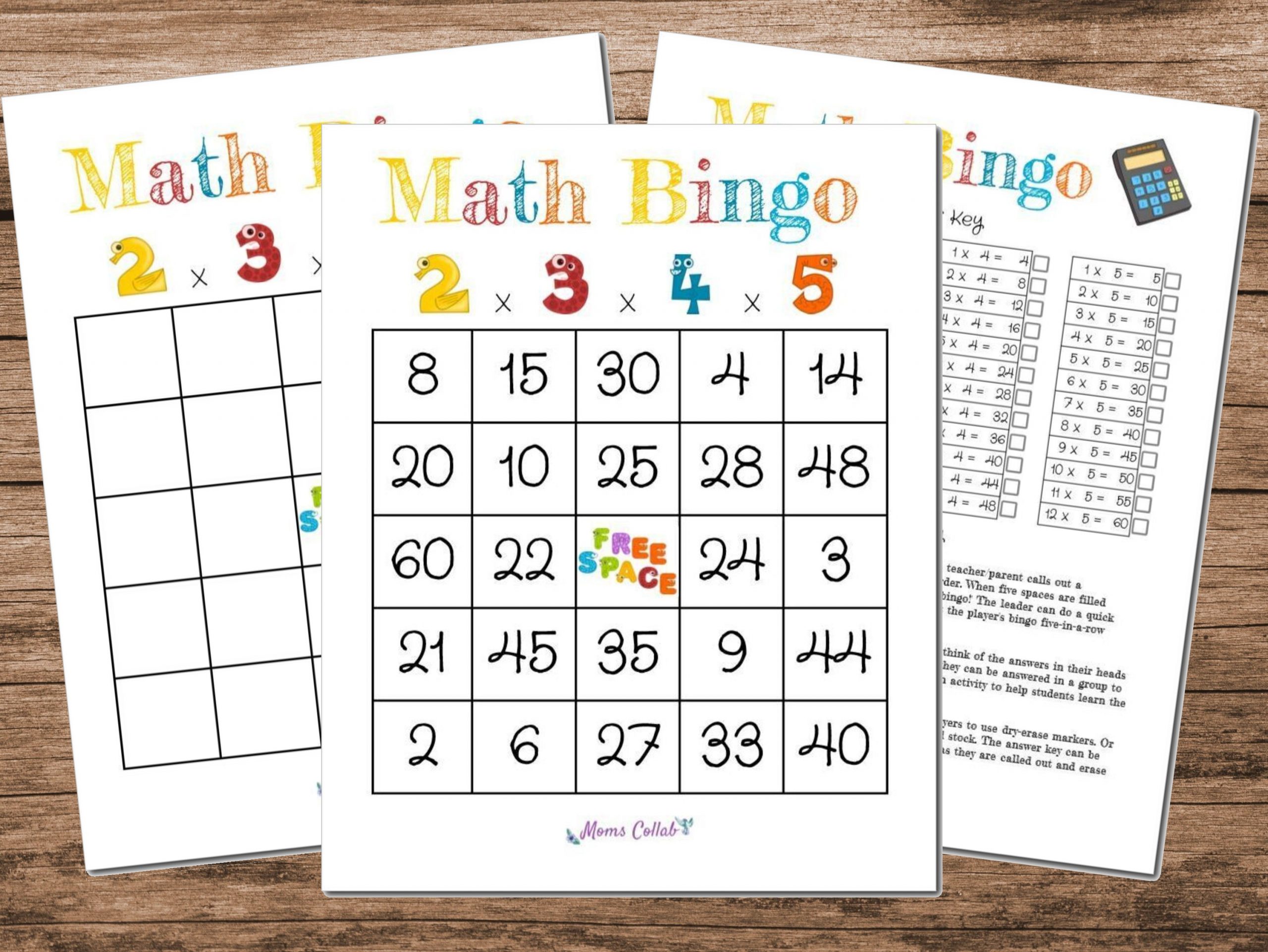
Related: 18 Jumbo Lawn Games That Will Spice Up Any Outdoor Party


